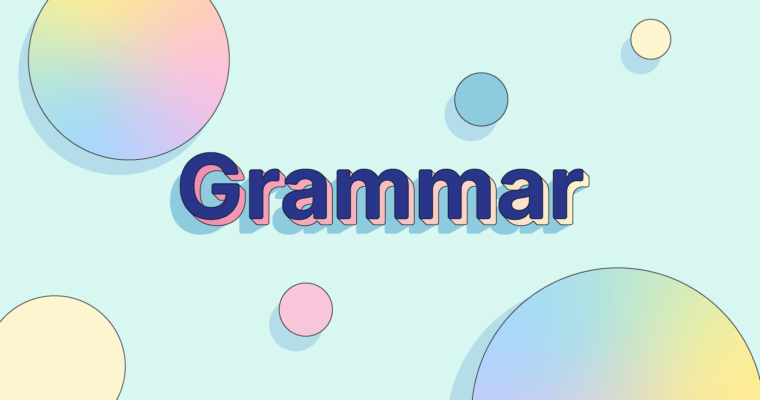
- A compound sentence is a sentence that connects two independent clauses, either with a coordinating conjunction like and or with a semicolon (;).
- Use compound sentences to combine two or more self-sufficient but related sentences into a single, unified one.
- A compound sentence requires at least two subjects and two verbs. Sentences with one subject and two verbs or with two subjects and one verb are still simple sentences, not compound sentences.
- Be careful with run-on sentences, which add too many clauses to a single sentence or connect clauses incorrectly.
- Compound sentences are similar to complex sentences; the difference is that complex sentences use subordinating conjunctions to connect clauses, while compound sentences use coordinating conjunctions.
Compound sentences give your writing a faster pace and unite related ideas, but they have a few more rules than standard sentences. Here, we’ll explain how to use compound sentences correctly in your writing.
Table of contents
Examples of compound sentences
Common mistakes with compound sentences
Compound vs. complex sentences
What is a compound sentence?
A compound sentence is a sentence that combines two or more independent clauses. The key here is independent clauses, which are clauses that contain both a subject and a verb, meaning they can each stand alone as a separate sentence. Essentially, a compound sentence brings together individual, related sentences as one.
- Simple sentences: My name is Montoya. I’m here for the interview.
- Compound sentence: My name is Montoya, and I’m here for the interview.
- Compound sentence: My name is Montoya; I’m here for the interview.
Compound sentence structure
Compound sentences usually use a comma followed by a coordinating conjunction, which are small words used to connect other words and phrases in a sentence. You might remember coordinating conjunctions as the FANBOYS: for, and, nor, but, or, yet, and so.
Additionally, compound sentences can also use a semicolon to connect two clauses, in which case no conjunction is necessary.
Let’s look at some compound sentence examples to see how they work. Below are two simple complete sentences, each with its own subject and verb:
To combine them into a compound sentence, we simply add a comma plus the coordinating conjunction and:
Alternatively, we can make a compound sentence by adding only a semicolon, and the sentence will still be correct:
Although they’re talking about the same topic, the subject of each independent clause is different: The first clause’s subject is I, and the second clause’s subject is name. That’s part of what makes them independent, and a sentence is considered compound only when it consists of independent clauses. For example, the sentence below is not a compound sentence:
Examples of compound sentences
Let’s look at some more compound sentence examples from some of history’s greatest writers:
Rules of compound sentences
1 A compound sentence needs at least two subjects and two verbs.
If both independent clauses use the same subject, it must be stated twice, as in the quote below, for the sentence to be compound:
2 Sentences with two subjects and one verb or with one subject and two verbs are not compound sentences.
- Not compound: Adelaide and I sing our duet tonight.
- Not compound: Adelaide sings and dances at the same time.
Each sentence has only one independent clause, but you can make it a compound sentence by adding a new independent clause.
- Compound: Adelaide sings and dances at the same time, but I can only do one thing at once.
3 Imperative sentences don’t always show their subjects because the subjects are implied.
That leads to compound sentences like this example, the first independent clause of which has the implied subject you:
Punctuation in compound sentences
When creating compound sentences, keep these rules in mind:
- Place a comma before the coordinating conjunction.
- If you’re not using a coordinating conjunction, place a semicolon between the clauses.
As always, you use a lowercase letter to start the second independent clause. Since compound sentences are single sentences, only the first letter of the first clause is capitalized.
Common mistakes with compound sentences
Compound sentences can be tricky. In particular, watch out for these easy-to-make mistakes.
Run-on sentences
A run-on sentence is a common English writing mistake that happens when a sentence incorrectly connects clauses. In writing, run-on sentences are both grammatically incorrect and challenging for your reader to understand.
To avoid both run-on sentences and confusingly long compound sentences, limit the number of clauses in a sentence to two or three. In situations when you need more than three clauses, keep them as short as possible by removing unnecessary words.
Remember, short sentences are easier to understand and give your writing a faster pace. And alternating between longer and shorter sentences gives your writing rhythm and keeps your reader engaged.
Connecting unrelated sentences
Even if you have two independent clauses, you shouldn’t connect them unless they’re related. The two clauses should describe each other or add relevant details; otherwise, they’re better off as two separate sentences.
Of course, you can always rephrase the clauses to show their relation and then connect them.
Compound vs. complex sentences
It’s easy to confuse compound sentences with complex sentences; both use two or more clauses in a single sentence. The most significant difference, however, is the type of clauses they use.
Compound sentences use two or more independent clauses.
Complex sentences combine independent clauses with subordinate clauses, also known as dependent clauses.
In this example, because I am working now is the subordinate clause, and we will eat later is the independent clause. The clue is the word because, which is a subordinating conjunction. Words like because, if, whenever, and since—and certain prepositions like after and before—all act as subordinating conjunctions. Their job is to connect subordinate clauses to independent clauses.
By adding a subordinating conjunction, you can turn an independent clause into a subordinate clause. I am working now alone is an independent clause, but with because in front, it becomes a subordinate clause.
Compound-complex sentences
A sentence can be both complex and compound at the same time. A compound-complex sentence occurs when a single sentence has at least two independent clauses and at least one subordinate clause.
In this example, after I got home from work is the subordinate clause (you can tell because the subordinating conjunction after appears at the front). Both my friends invited me out and I left my apartment again are independent clauses, joined by the coordinating conjunction and.
Put all three clauses together with the proper punctuation, and you will have a perfectly correct compound-complex sentence.
Compound sentences FAQs
What are compound sentences?
Compound sentences are sentences with two or more independent clauses. An independent clause includes both a subject and a verb, making it a complete thought. Essentially, a compound sentence combines related but separate ideas into a single, cohesive statement.
How do you form a compound sentence?
There are two ways to form a compound sentence. First, you can separate the independent clauses with a comma followed by a coordinating conjunction like and, but, or or. (I am tired, but I will finish my work.) Second, you can place a semicolon between the clauses without a conjunction. (I am tired; I will finish my work.)
What’s the difference between compound sentences and complex sentences?
While a compound sentence uses two or more independent clauses, a complex sentence uses one independent clause and at least one subordinate clause. Unlike independent clauses, subordinate clauses cannot stand on their own as a separate sentence. Complex sentences also use subordinating conjunctions, while compound sentences use coordinating conjunctions.
Can a sentence be both compound and complex?
Yes, and these are called compound-complex sentences. A compound-complex sentence combines at least two independent clauses and at least one dependent clause (After we finished our homework, I watched TV and my brother played video games.)
How are compound sentences used in writing?
Compound sentences help to connect related ideas, create a smoother flow, and add variety to your writing. Combining two independent clauses makes your writing more dynamic and engaging while maintaining clarity. Compound sentences also break up the monotony of using simple sentences repeatedly.



